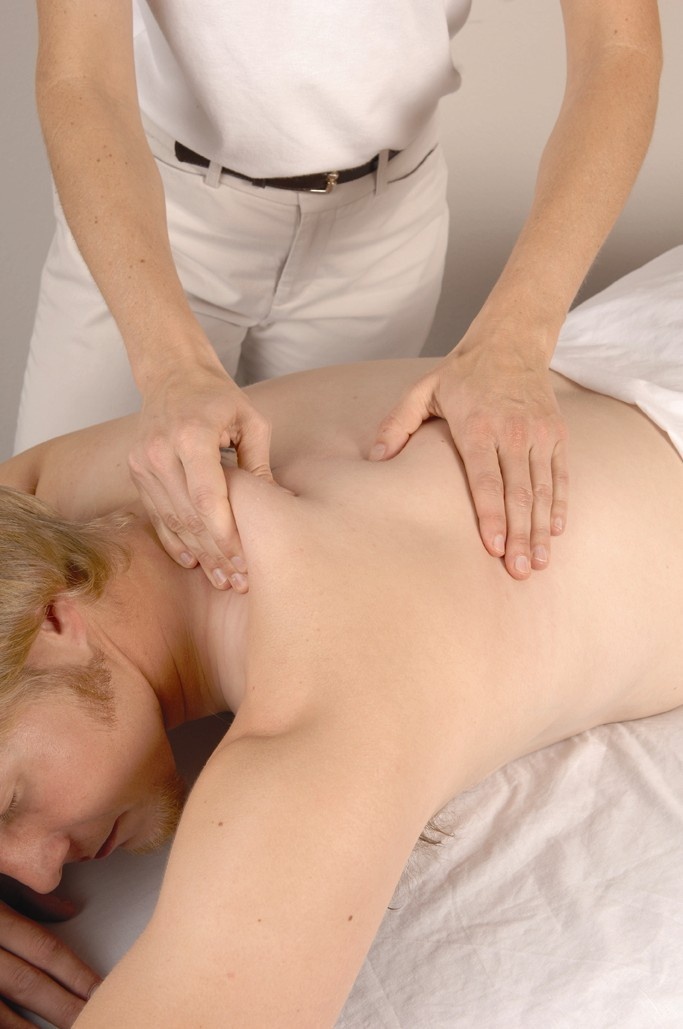|

Click to learn more about

Click to learn more about

|
Most of us in the industry always knew that massage can be invaluable on the road to health, including a journey towards shedding unwanted pounds. Well, this latest article confirms it. It was printed in Body Sense magazine, spring/summer 2010. Here are some of the highlights:
By improving your body's resilience, aiding muscle nutrition and flexibility, and supporting your mental and emotional well-being, massage can take your fitness plan to a whole new level.
Massage therapy works to improve your flexibility and range of motion. This makes you less likely to hurt yourself, meaning more productive and pain-free hours in the gym.
Massage therapy directly impacts the circulatory system. By constantly moving blood to body tissues, your massage therapist increases the amount of oxygen and nutrients your muscles receive. This cycle eases you into much-needed rest and relaxation time.
Massage relaxes the nervous system and takes the body into what is known as the parasympathetic nervous system. The parasympathetic state is very restorative to the body- it is where the body needs to go to heal itself. When you accomplish this through massage, it means you'll need less recovery time between workouts and that you can move your fitness routine full speed ahead.
As you continue to take time out to relax and care for your body through regular appointments, you'll naturally become more aware of your body's needs and more motivated to meet them.
Read the rest of the article 
MBy Karrie Osborn
Originally published in Body Sense magazine, August/Winter 2005. Copyright 2005. Associated Bodywork and Massage Professionals. All rights reserved.
As the cold and flu season approaches, it's time to bolster the immune system and give it a coat of armor against the certain onslaught that awaits.
Maybe you already take a defensive stand this time of year with a more diligent use of vitamins and herbal supplements, heightened precautions with hand-washing, or an extra glass of orange juice or serving of broccoli. But have you ever considered a lymph massage to help your body stave off the blues of winter illness?
Read the rest of the article 
Massage can relieve tension in your muscles, and most people use it for relaxation, relief of stress and anxiety, or to reduce muscle soreness. Massage can also cause your body to release natural painkillers, and it may boost your immune system.
Some studies have found it helpful for:

- Anxiety
- Pain
- Labor pain
- Children with diabetes
- Sports-related soreness
- Alcohol withdrawal
- Immune system
- Cancer treatment
- Self-esteem
Read the rest of the article 
From the article: Massage: A relaxing method to relieve stress and pain; www.MayoClinic.com;
posted February. 1, 2008.
Photo courtesy of ABMP
 Neuro-muscular therapy (NMT) is a corrective massage, that is intended to improve posture and muscular imbalances to help the client live with less pain and more function. Neuro-muscular therapy (NMT) is a corrective massage, that is intended to improve posture and muscular imbalances to help the client live with less pain and more function.
This specific and scientific approach to muscular pain relief will help to bring about balance between the musculoskeletal system and the nervous system. NMT enhances the function of joints, muscles and biomechanics (movement) and it releases endorphins, the body's own natural pain killers. It can be part of a comprehensive program, complementing all other health care modalities.
Neuromuscular Therapy examines six physiological factors that may create or intensify pain patterns.
These six factors are:
1. Ischemia
2. Trigger Points
3. Nerve Entrapment/Compression
4. Postural Distortions
5. Nutrition
6. Emotional Wellbeing
From www.nmtcenter.com, © 2008 NeuroMuscular Therapy Center
First of all, what is fascia? Terry Ritter is a bodyworker and owner of Evansville, Indiana-based Fascia Works. He explains, "Fascia is a tough connective tissue that spreads throughout the body in a three-dimensional web from head to foot without interruption. Trauma, posture, or inflammation can create a binding of fascia resulting in excessive pressure on nerves, muscles, blood vessels, and organs."
Ritter is trained in myofascial release, a type of bodywork that emphasizes fascial manipulation. He says it is a gentle form of stretching where sustained pressure is applied to fascial restrictions, creating a profound and long-lasting effect on the body's tissues.
What does this mean for you? It means that getting a massage from a therapist who is trained in this technique gives you an edge. What edge? More value for your dollar, it means that the muscle work that your receive will last longer, due to your therapists understanding of fascia. It also means less discomfort along the way, and less residual soreness after your session. Come see for yourself!
Fascia Facts Ask a Therapist
By Terry Ritter
|
|

